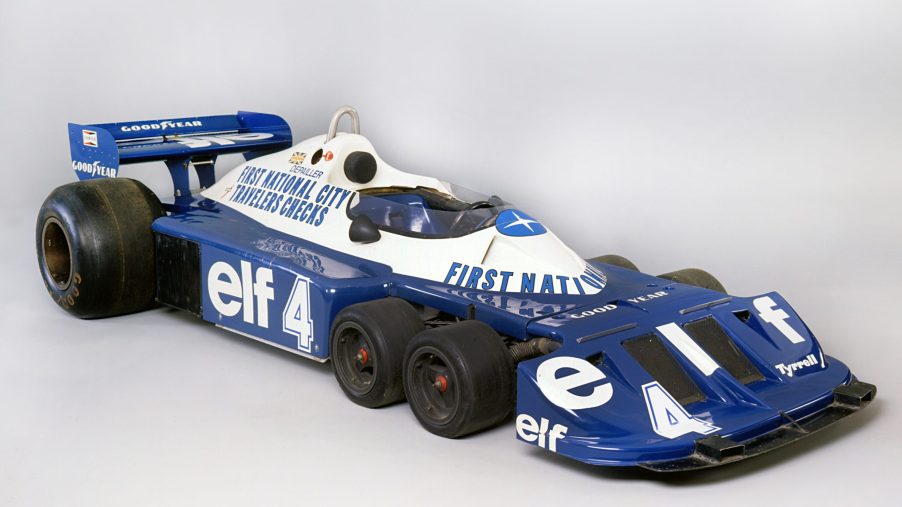
A 6-Wheel Formula 1 Car? The Tyrrell P34 Is the Weirdest Formula 1 Car
Cars have four wheels. It’s something of a fact. However, Formula 1 is all about finding millisecond advantages over the rest of the field. Sometimes, that means adding two axles, four more tires, and a window to throw the rulebook out of. And that’s exactly what the Tyrrell P34 did. It’s weird, it’s fast, and it looks dumb as hell. Really, what more do you need out of a car?
Why did some F1 cars have 6 wheels?

So, let’s start with the most obvious question: why the hell does the Tyrrell P35 have 6 wheels? Short answer: speed. Long answer: Tyrrell had a problem to solve. You see, the rules in Formula 1 are pretty tight. However, Tyrrell designer Derek Gardner found a loophole that eventually led to the six-wheel F1 car. Basically, the rules said the front wing needed to be of a certain maximum width. This left the front tires sticking out into the wind, as the rules stipulate, says Hagerty.
So, to get the Tyrrell P34’s wheels out of the wind, Gardner decided to used four smaller 10-inch wheels instead of the larger ones (similar to the rears in the photo above). In doing so, this kept an optimal level of traction at the front while also lowering aerodynamic drag. That means the car was, in effect, faster on the straights and had better grip in the corners.
The Tyrrell P34 got some people in trouble

Now, I’m sure you’re wondering how the steering worked. In essence, the steering rack, at the hands of Patrick Depailler and Jody Scheckter, only operated the front two wheels. However, the rear-front wheels were turned with a bell crank. Basically, the bell crank turned the rear-front wheels whichever way the front two were pointing via the suspension. You can bet the unconventional design immediately caused some controversy in the paddock.
The 6 wheeled Formula 1 car debuted in Spain during the 1976 F1 season. Such a stir, that the Tyrrell P36, and any other six-wheeled Formula 1 car, were banned from the sport. That’s because of how well the design worked. The pair of drivers managed podiums in seven Grand Prix, and Depallier and Scheckter managed a 1-2 finish in Sweden. While most people were affixed on the championship fight between Niki Lauda and James Hunt, Tyrrell Elf was mopping up the rest of the field.
We’ll never see anything like it again

Unfortunately, we won’t see this level of innovation in the sport. At least, not on such a visually obvious level. Mercedes’ DAS system comes to mind, but it’s not as visually striking as six wheels on a bright blue racecar. And perhaps that spirit of innovation is what’s missing. The rulebook has become too full for big, crazy, loopholes to be found. Hopefully, the rule change for the 2022 season will allow for more freedom of design.


